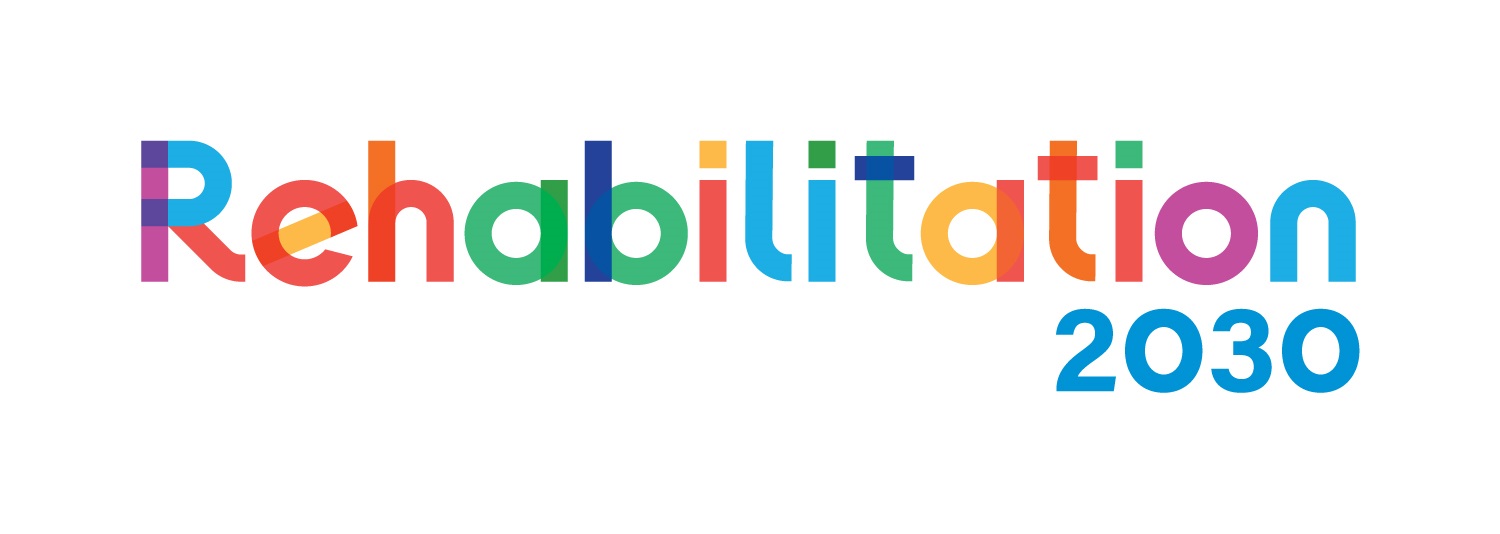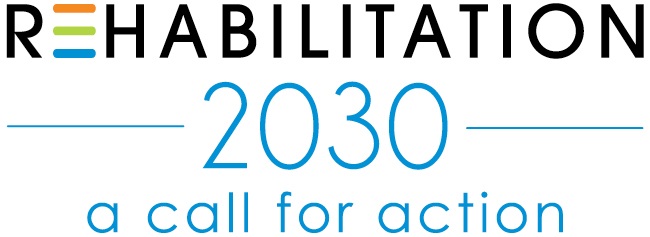
Rehabilitation 2030 Initiative

Background
The Rehabilitation 2030 initiative draws attention to the profound unmet need for rehabilitation worldwide, and highlights the importance of strengthening health systems to provide rehabilitation. The initiative marks a new strategic approach for the global rehabilitation community by emphasizing that:
- Rehabilitation should be available for all the population and through all stages of the life course.
- Efforts to strengthen rehabilitation should be directed towards supporting the health system as a whole and integrating rehabilitation into all levels of health care.
- Rehabilitation is an essential health service and crucial for achieving universal health coverage.
Call for action

The Rehabilitation 2030 initiative was launched in February 2017 and introduced a ‘call for action’, rallying stakeholder towards concerted and coordinated global action to scale up rehabilitation. In order to achieve this, 10 priority areas for action were identified:
Why do we have the Rehabilitation 2030 initiative?
Globally, one in three people are living with a health condition that benefits from rehabilitation. These needs are spread across the lifespan, from children with congenital and intellectual impairment, to young adults with physical limitation resulting from unintentional and war-related injuries, to older people experiencing chronic disease or difficulties associated with ageing. These rehabilitation needs will only grow in the coming years as populations continue to age, and the number of people living with chronic disease continues to increase throughout the world.
Many countries are not equipped to respond to existing rehabilitation needs, let alone the forecasted increase that is arising from health and demographic trends. Rehabilitation is often not prioritized in countries and continues to be under-resourced. As a result, countless individuals do not have access to rehabilitation services, leading to an exacerbation of their condition, further complications and lifelong consequences. In some low- and middle-income countries, more than 50% of people do not receive the rehabilitation services they require.
In 2017, in recognition of the growing global rehabilitation needs, under-developed rehabilitation services and significant potential for unmet rehabilitation needs to increase in future, the WHO, Member States, development partners and civil society came together to launch the Rehabilitation 2030 initiative.
Rehabilitation 2030 activities
Since the initial call for action, WHO has undertaken a series of activities to accelerate action and support progress in countries towards achieving the goals of the Rehabilitation 2030 initiative.
Technical support to countries
WHO has supported over 35 countries across all world regions to strengthen their health systems to better provide rehabilitation services. The number of countries requesting technical support from WHO is ever increasing. For more information on WHO’s country support, read here.
Relevant WHO resources
Rehabilitation in health systems
Rehabilitation in health systems provides recommendations for Member States and other relevant stakeholders to strengthen and expand the availability of...
Rehabilitation in health systems provides key recommendations for countries and relevant stakeholders to strengthen and expand the availability of quality rehabilitation services.
Rehabilitation in health systems: guide for action
There is great variation across countries regarding the rehabilitation needs of the population, characteristics of the health system and the challenges...
Rehabilitation Competency Framework
In many countries, the rehabilitation workforce is underequipped to meet population needs due to large scale shortages across professions and specializations,...
Rehabilitation Competency Framework is a tool that supports competency-based approaches to strengthening the rehabilitation workforce so that it is prepared to meet the needs of populations.
Additional WHO resources will soon be available, that will help countries to: strengthen rehabilitation service planning and integration; address workforce challenges and improve workforce planning, strengthen rehabilitation data collection and integration into health information systems; guide rehabilitation research; and integrate rehabilitation into emergency preparedness and response efforts.



